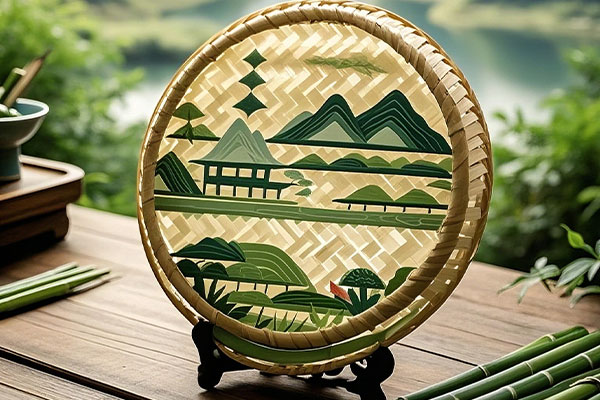Chinese Intangible Cultural Heritage - Qingshen Bamboo Weaving
Introduction
Qingshen Bamboo Weaving is a unique traditional handicraft originating from Qingshen County, Sichuan Province. Utilizing locally sourced high-quality ci bamboo as raw material, this craft employs distinctive weaving techniques to create various daily utensils and artworks. Renowned for its exquisite weaving skills and practical artistic value, it was inscribed on China's National Intangible Cultural Heritage List in 2008. Qingshen Bamboo Weaving preserves the essence of traditional bamboo weaving while incorporating modern aesthetic elements, representing a perfect integration of traditional craftsmanship and contemporary design.
Historical Development
Origins and Evolution
- Pre-Qin Period: Early bamboo woven utensils appeared in the Min River basin
- Tang-Song Dynasties: The craft matured, becoming an essential life skill
- Ming-Qing Dynasties: Developed unique regional characteristics, with products sold nationwide
- Modern Era: Transitioned from utilitarian objects to artistic crafts
Key Development Stages
- 1950s: Establishment of professional bamboo weaving cooperatives
- 1980s: Innovation in flat bamboo weaving for calligraphy and painting
- Early 21st century: Recognized as "Hometown of Chinese Bamboo Weaving Art"
Regional Characteristics
Main Technical Schools
| Type | Characteristics | Representative Products |
|---|---|---|
| 3D Weaving | Vivid shapes, delicate structures | Vases, lamps |
| Flat Weaving | Thin as cicada wings, fine as hair | Bamboo paintings, screens |
| Mixed Weaving | Combines multiple materials | Furniture, decorations |
Material Properties
- Uses 2-3 year old premium ci bamboo
- Requires 16 processing steps including splitting, node removal, layering, and dyeing
- Bamboo strands can be as fine as 0.015mm
Cultural Significance
- Ecological Wisdom: Embodies harmonious coexistence with nature
- Life Aesthetics: Perfect fusion of utility and artistry
- Artisan Spirit: Inherits meticulous craftsmanship traditions
- Regional Culture: Carries Min River basin folk customs
Core Techniques
Main Production Process
- Bamboo selection (best harvested post-autumn)
- Bamboo splitting (evenly divided)
- Strand making (hand-drawn fine strands)
- Dyeing (using natural plant dyes)
- Weaving (over 30 basic techniques)
- Shaping (final forming)
Signature Techniques
- "One-over-one-under" basic weave
- "Threading, inserting, nailing, locking" 3D weaving
- "Dual-color interweaving" pattern weaving
- "Virtual-real interplay" painting and calligraphy weaving
Preservation Efforts
- Living Inheritance: Established inheritor workshops
- Education: Incorporated bamboo weaving into school curricula
- Innovation: Collaborated with renowned designers
- Industry Support: Built bamboo weaving industrial clusters
- Cultural Promotion: Hosted international bamboo culture festivals
As an outstanding representative of Chinese traditional handicrafts, Qingshen Bamboo Weaving not only continues thousand-year-old weaving techniques but also breathes new contemporary significance into this ancient craft through constant innovation, making it an important showcase of traditional Chinese cultural charm.







